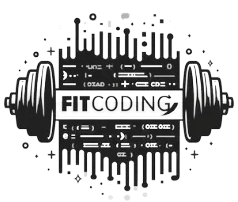What is Pressure Washing?
Pressure washing is an advanced cleaning technique that uses a high-pressure water spray to remove dirt, mold, grime, dust, and loose paint from surfaces such as buildings, autos, and concrete. This method of cleaning is highly efficient because it directly addresses the buildup of unwanted substances, making it an essential tool for maintenance. Pressure washing machinery varies greatly, from trim, portable options ideal for home use to large, industrial-grade machines designed for extensive cleaning jobs in commercial settings. With the right tools, a professional or homeowner can ensure the cleanliness and longevity of various surfaces, preserving their appearance and structural integrity.
Benefits of Regular Pressure Washing
The benefits of regular pressure washing extend beyond mere aesthetic improvements. By systematically removing accumulated dirt and pollutants, pressure washing can significantly extend the life of exterior materials such as brick, wood, and even metal surfaces. This preventative maintenance can stave off the existential threat posed by mold, mildew, and algae, which thrive in damp and dirty environments. Moreover, pressure washing can enhance a property’s curb appeal, which is particularly beneficial for home resale. A clean exterior suggests a well-maintained property, often increasing perceived value. As a result, frequent pressure washing is more than a cost; it is an investment in your property’s long-term health and profitability.
Techniques for Different Surfaces
Every surface presents its own challenge when it comes to pressure washing. Professionals must adjust their techniques according to the material at hand. For instance, while wooden decks require a gentler touch to prevent etching and splintering, concrete surfaces can handle more aggressive cleaning to remove tough stains like oil or grease. On the other hand, surfaces like stucco or painted siding need low-pressure settings alongside specialized detergents to safeguard the finish. Ensuring that the correct pressure and technique are used is vital in maintaining the structural integrity and appearance of each distinct material, preventing unintended damage while attaining the desired cleanliness.
Safety Precautions in Pressure Washing
Safety in pressure washing cannot be overstressed. The potential hazards associated with operating high-pressure equipment make it crucial for users to implement rigorous safety measures. Wearing adequate personal protection equipment, such as goggles, gloves, and waterproof clothes, can help guard against injuries caused by debris or high-velocity water spray. Additionally, understanding the mechanics of the pressure washer and maintaining a safe distance from the surface during operation are essential preventative actions. Clear communication and respect for safety requirements may dramatically minimize the likelihood of accidents, establishing a safe atmosphere for all participants in the process.
Innovations in Pressure Washing Technology
The pressure washing industry has witnessed significant innovations that enhance both its efficacy and eco-friendliness. Modern machines now offer adjustable pressure settings and specialized nozzles that allow for versatile applications across different surfaces. The development of advanced detergents, which are both powerful and biodegradable, further improves cleaning outcomes while minimizing environmental impact. Furthermore, innovations such as automated systems for large-scale pressure-washing projects exemplify the industry’s commitment to efficiency. Pressure washing company increasingly equipped with tools that offer precise control, reducing wastage and optimizing the use of water and cleaning agents.
Sustainable Pressure Washing Practices
As environmental considerations take center stage, sustainable practices in pressure washing gain prominence. The industry is shifting towards methods that reduce water and chemical consumption. Employing high-efficiency machines and practicing water reclamation during operations can substantially cut down on resource usage. Additionally, using eco-friendly cleaning agents that degrade naturally greatly benefits ecosystems by reducing chemical runoff. Adopting these sustainable practices not only preserves the environment but also often results in cost savings.
Pressure Washing in Urban Spaces
In urban spaces, pressure washing is essential for keeping communal areas clean and sanitary. High foot traffic locations like sidewalks, parks, and public venues quickly accumulate debris that detracts from their appeal. Regular pressure washing removes grime, promotes a clean atmosphere, and supports public health by reducing bacteria and allergens. Municipalities recognize its importance and often include it in routine maintenance schedules.
Choosing the Right Pressure Washing Service
Selecting a reputable pressure washing service requires careful consideration. Customers should look for providers with strong track records supported by reviews and certifications. It’s essential to inquire about their experience with different surfaces, the technology used, and adherence to safety and environmental standards. Potential clients should ask about specific techniques and equipment to ensure they meet their project’s needs. Thorough research empowers property owners to choose a service that delivers quality results, preserving their investment and enhancing community well-being. For insights on how technology is transforming building maintenance, explore recent developments in the industry.
CLICK HERE FOR MORE BLOG POSTS











